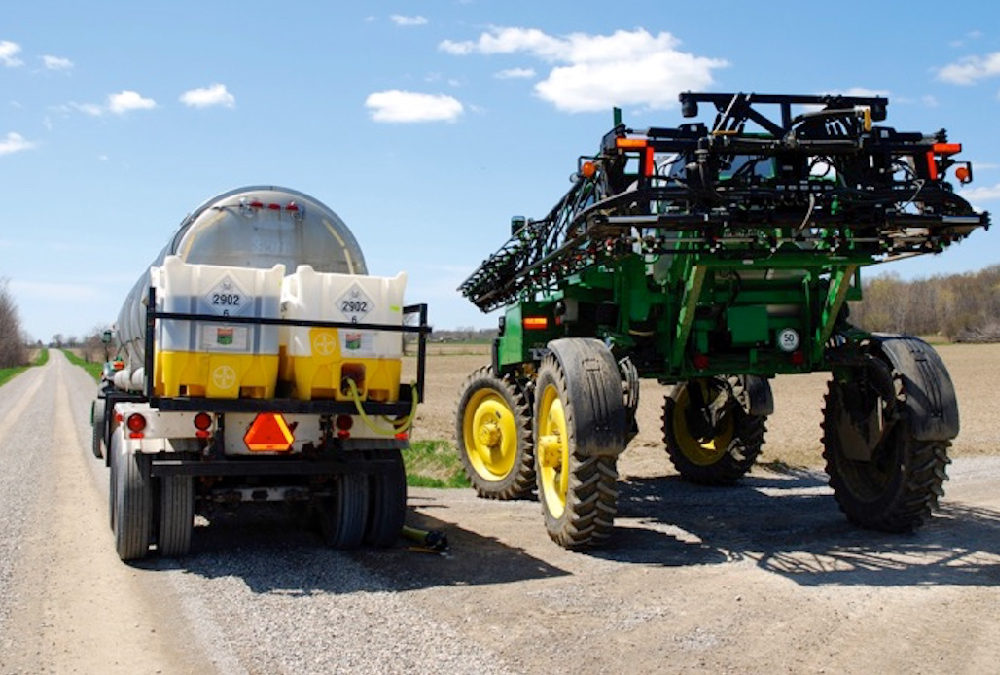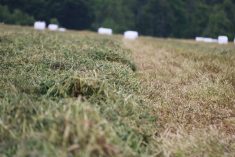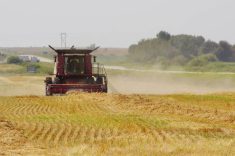It’s been a long, cool spring and farmers have had extra time for field preparations. Sprayers and seeders are poised and ready for action and, when the temperature hits growing degrees, everything will happen fast.
The first happening should be the spring burn-off.
“I’m a big fan of burn-off spraying,” said Manitoba Agriculture weed specialist Kim Brown-Livingston. “I know it’s tough to get out there and get ahead of the seeder, but we ideally want you to be doing that burn-off as close to seeding as possible.”
Read Also

Manitoba boosts stake in cereals centre to $23.5 million
Premier Wab Kinew said the additional project funds will help ‘Trump-proof’ the provincial economy.
Why it matters: Early weed control gets crops off to a good start and targets weeds when they’re younger and more easily controlled.
It’s a simple idea. Knock back unwanted germinating plants so the crop emerges surrounded by black soil instead of a haze of weeds. The crop can grow first, close the canopy and thrive with the lesser competition of younger weeds.
“A good competitive crop is the best weed control you can have, so whatever we do, it’s to set up that crop so that it can be growing well,” Brown-Livingston said. “It really takes the pressure off and it allows our crops to get off to a really good start.”
So far this spring, cool temperatures have pumped the brakes on field drying, while ample moisture is good news for weeds.
“We’ve had some dry years where we just did not see a lot of weed control,” Brown-Livingston noted. “There are so many seeds in that seed bank that there are always going to be weeds coming up.”
Mother Nature may have delayed field operations again in 2023, but farmers can take advantage of the extra time to give their sprayers a good once over.
Tom Wolf, spray specialist and one of the main voices behind Saskatoon-based company Agrimetrix, recommends starting with the computer processor.
“One thing that needs to happen on modern sprayers is to make sure that you’ve got the latest software,” he said. “These pieces of equipment have very large processors on board that handle all the functions of the sprayer. We often have annual upgrades on the software, so if there’s a bug or functionality improvement, you can download the upgrade.”
After that, the farmer should make sure the flow meter is working. The sensitive instrument, if it wasn’t removed in fall, should get maintenance this spring.
“Make sure it’s clear and clean and working well,” Wolf said. “It’s usually an impeller type, so it’s important not to spray compressed air onto it to make it spin, because it could spin too hard and burn out. Just do that with your fingertip or blow into it gently. It will start to spin, just make sure it spins freely.”
The boom ends should be next. They’re notorious for collecting and concentrating material in the dead space past the last nozzle. These should always be kept clean and flushed.
Then it may be time for a live test.
“A big part of it is pressurizing it up, making sure there’s no leaks and tightening up the various clamps and flange connections that you have and making sure that everything is working as it should and that all the screens are clean,” Wolf said.
“And make sure that the flow is what it ought to be. You should know what the nozzles deliver in gallons per minute at pressure. Just make sure those numbers match up.”
Scouting
Once the sprayer is ready, it’s time to scout the fields. With good scouting and experience, a farmer should have an accurate idea of what weeds they’re dealing with.
“You need to be able to recognize them when they’re really small,” Brown-Livingston said. “There’s good online guides. We have one and it’s available digitally for weed seedling ID.”
The trick is to identify the “driver weed” — the most common one or the most difficult to kill. This is the weed that determines what to mix in the tank in combination with glyphosate. The goal is to keep the weed from becoming herbicide resistant.
“When you ask which weeds might be resistant, my answer is, all of them — perhaps not today, but that’s what’s coming,” Brown-Livingston said. “We need to be aware of this.”
Some glyphosate-resistant weeds are already economically damaging. Kochia is the big one, while weed experts in Manitoba are concerned with increasing reports of water hemp.
For advice on tank mix formulation, the “Guide to Crop Protection” has two burn-off tables.
Hurry up and wait
When the sprayer is primed, the scouting done and the chemistry ready for the tank, it’s a waiting game for temperatures to reach optimal highs.
“Ideally, the rule of thumb is eight degrees and rising.” Brown-Livingston said. “You want to have a period of eight degrees for several hours during the day and you don’t want to be dipping into the freezing temperatures at night.”
All organisms have an optimal operating temperature. If the temperature is too low, the weed’s metabolism is too slow to absorb the herbicide. The action can’t take place and the herbicide will simply wear out before it can do its job.
Once the burn-off is done, it’s a good idea to scout again to assess control.
“Having a burn-off program is a great idea.” Brown-Livingston said. “I think it’s a really important part because it enables us to start clean. It takes out some of that weed pressure at the beginning of that crop’s life cycle … when that crop is really vulnerable and not competitive.”














